Now that deer season is in full swing and AB 711 has put the kibosh on hunting with traditional ammo in California many of us are looking to alternatives. The whole lead scare was debunked here, but even still. While we can debate whether lead ammo is dangerous to you as a hunter, I think the whole ‘lead ammo kills wildlife’ argument has been looked upon as junk science. The only area where I might agree is in bird hunting, specifically in the wetlands here around San Francisco. We haven’t used lead shot in the San Francisco bay for decades, and the birds are doing just fine, I am happy to report . . .
So now that we are all happily freezing our backsides off in our tree stands, keeping an eye out for that ever elusive hogzilla or buck that would put bambi’s father to shame, what’s the best tool for the job? I’m sure many of you have taken your rifles to be blueprinted and spent more on a scope than you make in a month. You have more camo, funky smelling sprays and camping gear than you can shake a stick at. But why are you going after that big prize catch with bulk ammo? Are you using the stuff in the big box you snatched up at Wally World because the price was right? Sure it goes bang and it’s probably pretty accurate, but why not invest in the right tool for the job?
I got a chance to sit with my friend Scott Sterling recently who runs Monolithic Munitions. Monolithic hand builds hunting grade ammo. You could call it match grade, but shooting paper – beyond sighting in your rifle – would be a waste and honestly I couldn’t afford it. Scott and his team custom build their own, using non-lead-based bullets from GS Custom bullets out of South Africa.
Scott loves non-lead bullets for hunting. While the possibility of lead ammo causing health issues is probably quite small, it’s always better safe than sorry. More important is performance. We all want to take our catch with as few shots as possible, and have it remain humane. Having to go off and chase an animal through the woods to get a follow-up shot is a major pain. That’s why we want a bullet that works the best to it’s abilities. Accuracy, penetration and wound cavity are all important for hunters.
Scott is the Mr. Wizard of ballistics and I mean that in the most endearing sense of the word. He knows more about internal, external and terminal ballistics than anyone I know. He loves bullets, eats, sleeps and breaths potassium nitrate. He can educate you on why a bullet does what it does, like Stephen Hawking’s can teach you physics. Because of his love of all things ballistic, he is a tinkerer. What does that mean? Well if you are looking for a 14.9 SOP, or the worlds fastest .223 Remington, Scott is your man.
The 14.9 SOP 1690g bullet 3000 fps.
Scott blows up fruit better than FPS Russia!
All kidding aside, the range time and testing have produced some really great loads. If you are a long-range hunter and want to give yourself the best chance at a clean kill, look no further.
The penetration of these bullets can’t be beat. Below is a shot of a ballistics gel test with the numbers.
“Testing 22-250 Remington loads 40g GS HV compared to a 40g Polymer tip varmint bullet from a major manufacturer. The HV impacted at about 4400 fps the 40g Poly tip at about 4200 fps. Notice the permanent damage of both bullets is similar. The large damage track for the HV goes 8.5” in, and what you can’t see is the HV went 26.5 “total penetration. The Poly tip only makes a good wound 2.5” in and total penetration is only 6.5” The Poly tip is a varmint bullet so it is expected to be fragile, but what really sets the HV apart is the damage in the first few inches is as good as a super fragile varmint bullet, without the lead fragments, and the penetration is equivalent to a big game bullet.”
Below is a picture of a grouping with 416 Barrett ammunition at 700 yards.
His friend Chris was nice enough to stop by and show us a hog he took with a .223 round. The shot went from stern to stem and logged in the breast plate. The bullet never fragmented and did the job it was designed to do.
Here’s the bullet itself. Notice how it remained intact.
The bottom line is that Monolithic is the Holland & Holland of ammunition. It isn’t cheep and certainly isn’t something you will buy in bulk. But I can say that each of the hand-inspected loads will serve you well. If you are looking to step up your game in getting game, they’re worth your consideration.

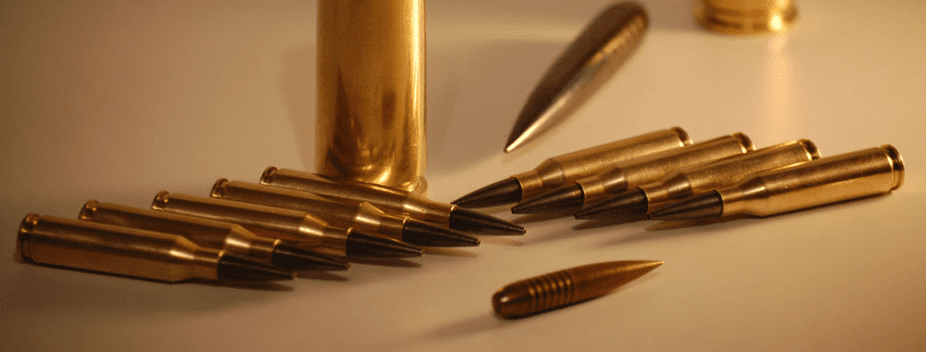

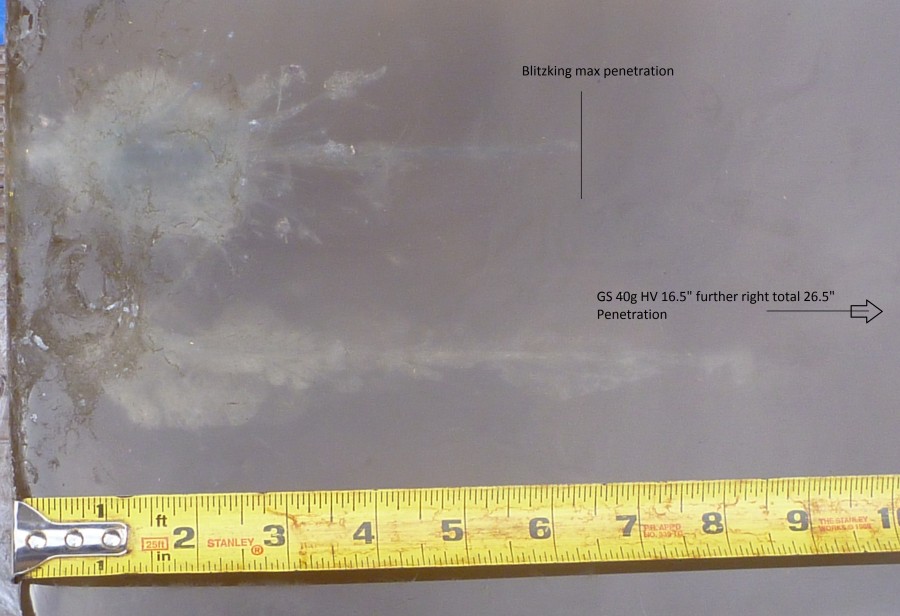

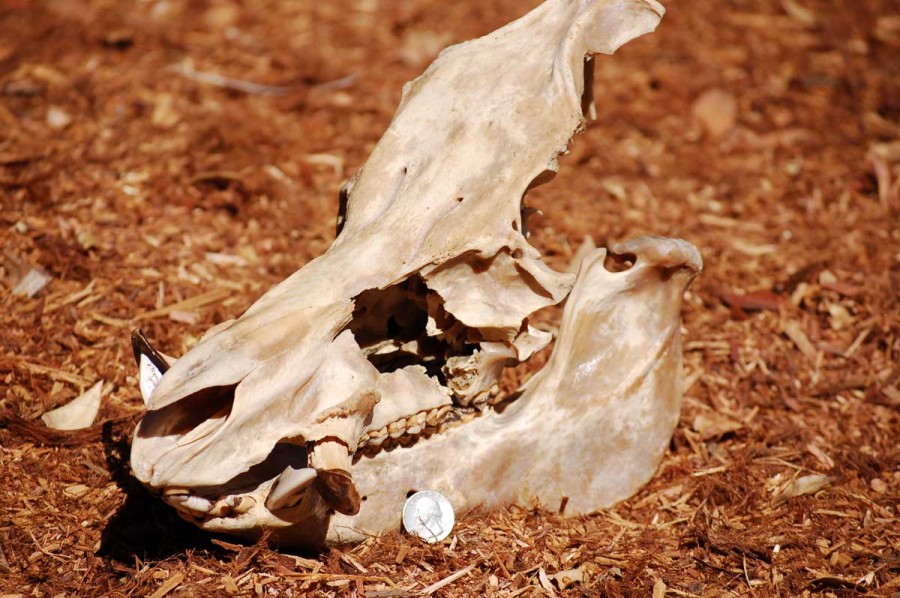

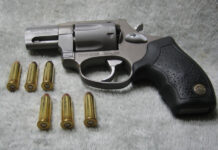
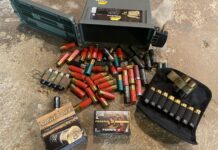

Isn’t overpenetration always a bad thing? Let me ask my wife.
Now that is funny.
I’m told that the CA condor’s digestive system is slower and more acidic than other wildlife (in order for the bird to handle rotting carrion), so lead that would simply pass through other animals instead is broken down and becomes problematic for the condors.
Why we need a state-wide ban to protect one species that has already proven to be unable to survive in the modern world, I do not know. The species was at one point reduced to a few dozen individuals, and genetic problems from breeding in such a small population are all but guaranteed. Yes, the attempt to save some remnant of the species is noble, but ultimately there is no scenario in which wild condors regain a significant place in the ecosystem.
Meanwhile, flavor of the day crusades to save choice species continue to ignore the imbalances that we can address: the shortage of large predators, and the overpopulation of large prey species which are attracted to and pose dangers to areas that we humans inhabit including vehicle collisions, property damage, and the spread of disease.
I thought I read somewhere that it was determined that the condors were getting their lead not from bullets and shot but from the lead paint used on fire towers and the like….
Lead bullets have been banned in the Condor range for a while.
The fact they are still having issues, I am convinced is not lead ammo. Many folks haul out their catch whole, and even those that field dress them probably take the part with the bullet. Based on that alone any expanding range which the condor might be in, their chances of actually biting the bullet as it were is pretty rare.
The entire push for AB 711 was junk science, and they got away with it.
The Condors eat lead paint chips off the old ranger buildings. 100% serious. You eventually reach the point where maybe those animals don’t really deserve to survive and natural selection has made its choice.
Wait… Lead Paint……. Why isn’t California suing the federal gov’t over their failure to remediate the lead contamination from the lead paint? The number of lead bullets in the condor area could never equal what the gov’t itself is doing to the ugly assed birds that are dying out on their own world wide.
Simple answer. The ban on lead bullets is not about saving a bird.
Daniel, you seem like a nice guy and all, and I’m really not saying this to make you feel bad, but you need an editor, man.
“While we can debate” should be a new paragraph. There are arguably a few more of those later on.
“bambi” should be capitalized.
“Hawking”
“Cheap”
if you understood what he was saying den it need no editing. dang it i forgot to capitalize. oh well.
If dis were some random Twitbook post I wud agree wit you.0
Swarf I am actually dyslexic so the fact I can even get what I do out the door is a challenge at times. lol
The other couple like Hawkin was an auto correct snafu. Bambi, well that was all me.
1690g bullet? Is that one of the 40mm pistol bullets everyone is always blathering about? either way, I want one.
Daniel, I understand that the total lead free ban on hunting ammo passed. But I was under the impression that, outside of the condor zones, it hadn’t actually been implemented yet. My son has been hunting with lead shot for quail and pheasant and he’s encountered wardens during his hunts. They say the statewide ban hasn’t taken effect yet and they’re unsure when it will.
I sign up for my hunter safety course this month. And I agree, the price of premium amo for your hunt is really not a problem when compared to the other expenses of a hunt.
JWM you are correct. Lead ban in condor areas has been forever now.
State wide ban has not gone into effect yet. Even with out the ban better ammo is always a good thing.
Give the guy a break. I’m pretty dyslexic and at times my spelling is horrid. I also regularly neglect to capitalize some words like Obama for instance.
I will never capitalize obama
Show me an optic with enough magnification and glass clear enough that you can actually see clearly at 5,000+ yards, and has enough elevation and windage adjustment to let you put the bullet on something that far away, and better yet even confirm consistent accuracy at that distance, and you have yourself one happy customer.
Did you check out the Monolithic Munitions website. Look at the ballistics for the .338 Sub MOA at 1000 yds!
Not bad. But it’s ballistic coefficient is only .795.
Aerodynamically the barnes LRS has it beat with a coefficient of 1.07. Sure, the .338 is a bit faster, but it’s hard to argue with the accuracy.
Heck, even cheaper hornady amax has a coefficient of 1.05.
Good stuff.
Thanks,
I’ve gotten out of the habit of even checking out long range match ammo. I live in the NE and its hard as hell to find a range over 300 meters anyway and a pain in the ass to even own a firearm. You know gangsta’s like to carry bolt action long guns in their pant to rob stores and do drive bys with so no one can have them.
Gerard here, I am the designer of the GSC drive band bullet and would be happy to address the concerns mentioned.
The BC of the GSC 232gr bullet must be compared to the BC of other manufacturers 338 bullets. For example, the Hornady A Max with a 1.05 BC is a .50 cal 750gr bullet. GSC has a .50 cal bullet of 720gr with a BC of 1.025 so one must compare apples to apples. Bullet for bullet, GSC ballistic coefficients are very much comparable to the best there is.
Easy, get an optic that is mounted on a 45 degree angled rail.
Expensive, overhyped, poor expanding at 300+ plus yard .308 copper bullets can KMA. My Hornady SST bullets will kill them just as dead at longer ranges & cost much less. All that & it doesn’t do any damage to the environment or “innocents bystander” animals.
Problem with copper is its often found with lead when mined. Poor smelting processes and result in copper with to much lead in it so safe consumption so I’m sure the epa will want to ban copper bullets soon too.
The expansion of GSC turned copper bullets cannot be compared to other makes of mono copper bullets. Just as there are differences between jacketed leadcore bullets and some expand explosively and some hardly expand at all, there are differences between the variety of copper monos that are available. GSC expanding hunting bullets will give a double caliber mushroom as low as 1600fps impacts. That is a lower impact speed than that at which many premium jacketed bullets will expand.
At GSC we use a very specific grade of copper. It is as close to pure copper as what one can get. There are alloys that contain lead but those are the various brass and bronze alloys that are available. GSC does not use these alloys.
I wonder what kind of barrel life you get when regularly shooting something like that. It seems like throat erosion would be pretty severe.
Throat erosion is worsened by bullets that fail to seal at all like under sized mono metal bullets. Jacketed lead bullets that are under sized will expand radially and shorten lengthwise until the barrel is sealed against gas blow-by. This often happens only once the bullet is fully into the rifling. GSC drive band bullets seal from the get go and will extend barrel and throat life two to three fold compared to other brands.
Daniel, my understanding is that in California we must hunt with JHP’s. That bullet from the hog does not look like it expanded or was not a JHP. What’s the deal with that?
Expensive or not, I am sure happy to hear that at least one manufacture is trying to make a variety of leadfree ammo. It is hard enough to find ammo here at all. I have yet to find leadfree 223.
The bullet from the hog was a jacketed hollow point bullet from the GSC HV range. It expanded, formed the wound channel and then, due to the speed remaining after expansion and forming the wound channel, threw off the expanded petals. The remaining expanded shaft section was recovered and is what you see in the picture. It is the best of both worlds: Expansion forms the wound channel and, if the bullet is stressed beyond that point, the shaft continues with deep and linear penetration.
Steve Merchant, wildlife population and regulation program manager with the Minnesota Department of Natural Resources, conceded the NSSF’s point that no one can definitively say whether any species would be more abundant if lead ammunition was banned.
Comments are closed.